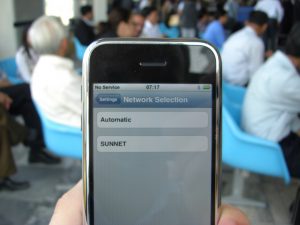5 ways to improve your WiFi signal
A bad WiFi signal will slow down your installed mobile broadband connection, even if you have great 4G LTE or 3G coverage. A slow connection can make online activities, like video streaming and online gaming, all but impossible. If a bad signal is bringing you down, try to improve your WiFi signal with these five tricks:
1. Install a directional antenna. A directional antenna sends and receives radio waves in one direction, the direction of the nearest cellular tower. By focusing radio transmission in one direction, these antennas minimize signal loss and maximizes range. No other solution boosts the signal strength of your local network as much as a directional antenna.
2. Install an omnidirectional signal booster or extender. An omnidirectional signal booster or extender sends and receives radio waves in every direction. These antennas are more common than directional antennas, in part because they are incredibly easy to install. In fact, most models are “plug and play.”
Extenders are also a great way to extend the overall range of your WiFi network.
3. Move your router to a central location. The antenna on your wireless router is multidirectional, which means it transmits in every direction, but has limited range. For a better signal throughout your house or office, install your router in a central location or in the room where you’ll be using WiFi most often. For best results, place your router on the horizontal plane where you use your devices (at desk height, for example).
4. Clear obstructions from in and around your home. Modern construction materials, like steel frames, interfere with radio signals. To improve your WiFi signal, keep the space between your router and your device clear of obstructions. To improve cellular coverage, clear away an obstructions, including trees and vegetation, that come between your router and the nearest cellular tower.
5. Change your router’s channel. When WiFi networks overlap, they interfere with each other. If, when you connect to WiFi, your neighbors’ networks pop up as well, you may want to examine your router’s channel to make sure you aren’t competing with your neighbors’ for the same radio waves.

Is it bad WiFi or bad cellular coverage?
While a stronger WiFi signal is never a bad thing, it can’t compensate for poor 4G LTE or 3G coverage in your area. To test whether your problem is a weak WiFi signal or poor cellular coverage, follow these steps:
- Run a speed test on a device connected directly to the 4G LTE or 3G network, like a phone with mobile data (just make sure WiFi is disabled).
- Run a speed test on a device connected to your WiFi network, like the same phone with WiFi enabled.
- Compare the results. If the first test has better results, the problem is probably WiFi. If the two tests are very similar, the problem is probably coverage.
If the problem is coverage, try installing a directional or booster antenna. If that doesn’t work, consider changing your cellular carrier. Check availability in your area with our site, or check directly with Sprint, Verizon, AT&T, or another carrier. For additional internet options, take a look at the comprehensive government broadband map (currently outdated).
Get started
Need help finding a reliable mobile broadband connection?





